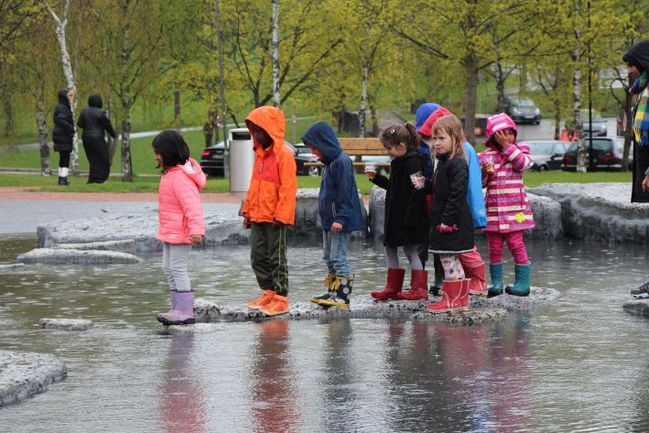Gransdalen river bank (2015)
Commission for The World Park, Furuset, Oslo. Larvikitt Stone, concrete, water, 37 x 31 m.
My first outdoor work is embedded in a public square in The World Park, Alna. To some extent, the square is formed to fit the work of art. I collaborated closely with the builder of the park (Agency for Urban Environment, (Oslo)) and their experts with the project.
The park was part of a communal/ national project to upgrade the eastern boroughs of Oslo. The name The World Park was chosen to reflect borough of Alnas ethnically and culturally diverse population.
I suggested to fill The World Square with a collection of «Lost rivers». Every city have them: As urban areas grow, rivers and streams are swallowed, covered up or led into tubes. Senterbekken was the local example, a creek that used to run through the little valley that makes up the site of The World Park. The creek was removed fram the surface in the seventies, but 40 years later it was restored and included in the upcoming park. Demographic changes had sent Senterbekken underground, and demographic changes brough it back.
Similar restoration of buried rivers happens all over the world when cities discover the environmental value of them. I thought the various stages of «lost rivers» could represent the processes of change in general, and urban changes in particular. I collected a «bank», of them (like a blood- or gene bank), and had downscaled river courses polished into the flagstones of the square. About a 1/3 of them are «donations»: Rivers or streams suggested by lokal people.
The artwork also consist of two other parts: a pool/ reservoir where the edge is made up of models of specific dams, and five groups of rocks, each group shaped as selected islands from a fragile river delta.












